ASHOVER - Planet 0-4-0 diesel
5" gauge - 1:4.8 scale

I can blame the GMES for this one! Working for many years on the 16mm NG layout we were stuck right in the middle of a dual gauge (3.5" & 5") raised track. Every open day or show we were surrounded by gorgeous locomotives. Steam was wonderful, but well beyond my capabilities. Then I discovered the Diesel & Electric open day. I attended a few and was even allowed to drive a few battery powered loco's - great fun. A new project took shape and, of course, it had to be narrow gauge.
Finding a prototype was a good start (although I'm always open to a bit of tweaking) and eventually, a Hibberd 48hp Planet 0-4-0 diesel came to light. We even had the opportunity of photographing the original languishing in a shed on the Ffestiniog railway. It was best known for working on the Ashover Light Railway, where it was called Ashover. (See below)
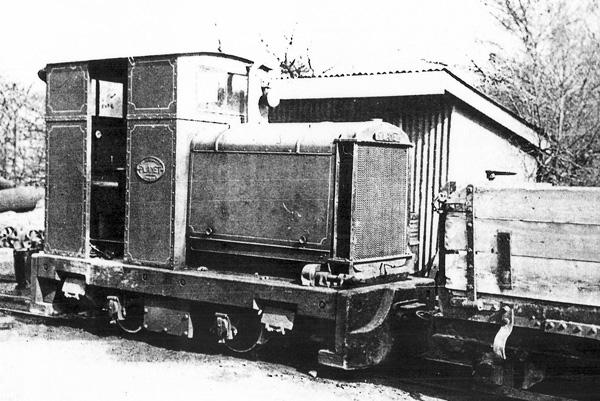
The Model
Designs were designed and drawings were drawn and redrawn and redesigned and eventually....
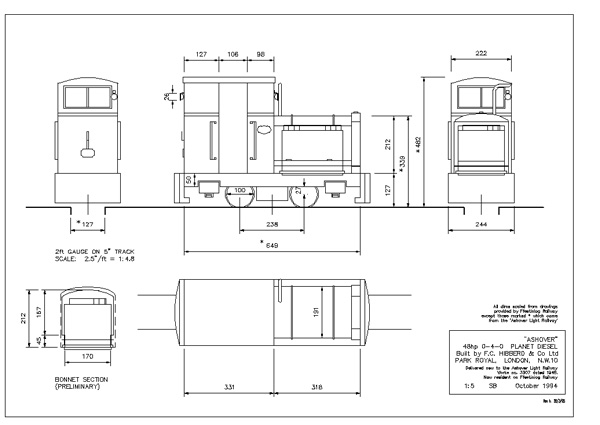
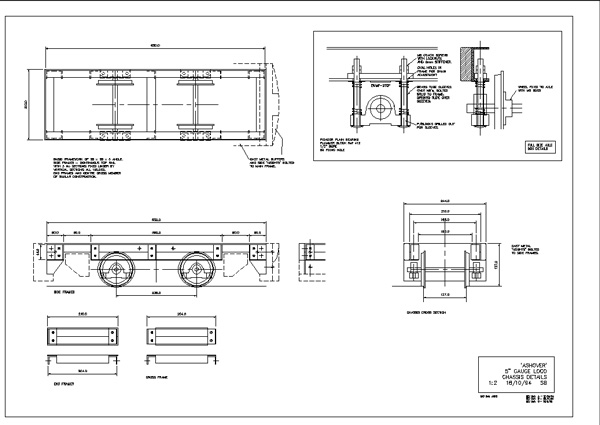
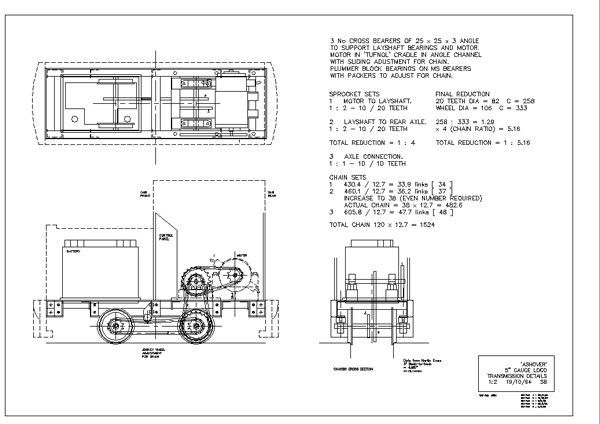
Main components:
Chassis - fabricated from 25mm steel angle welded and bolted together.
Wheels - purchased ready turned.
Axleboxes - plummer blocks mounted initially on rubber pads and latterly springs.
Motor - spare for a Sinclair C5.
Gears - hand made from sheet steel.
Chain - bike chain.
Battery - deep cycle leisure type.
Speed controller - scratchbuilt from a series of articles in Model Engineer.
Bodywork - 2mm MDF and solid wood with metal trimmings.
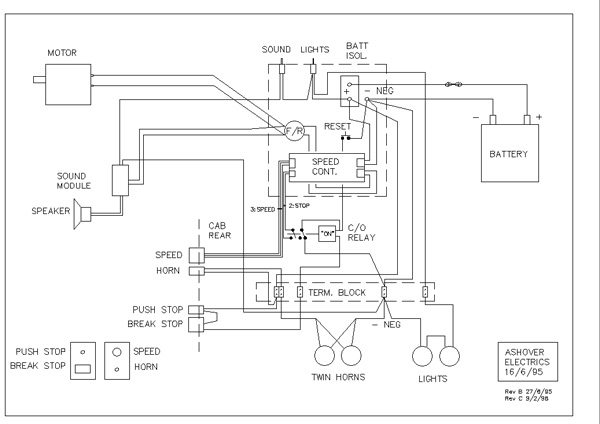
Key features of the electrics:
The forward/reverse knob needed to switch approx 30amps and came from a work colleagues father who had a specialist control panel company! The sound unit is by Robbe and came from the local aero-modelling shop. It is highly adjustable and is very loud. The speaker is mounted behind the radiator. A 12v horn was found in a box at a model railway show, but on its own sounded a bit weak, so another was purchased. The pitch could be modified and would be tuned to suit. A small plug (to be fixed to the back of the cab, with a string/chain to the driving trolley) kills all power to the loco, in an emergency(!)
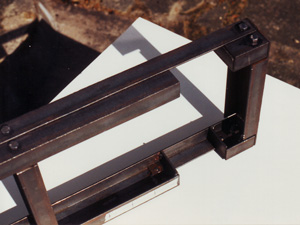
The chassis was similar the real loco - channel section steelwork - replicated by using two angles. Basic sides and ends were welded-up and then bolted together.
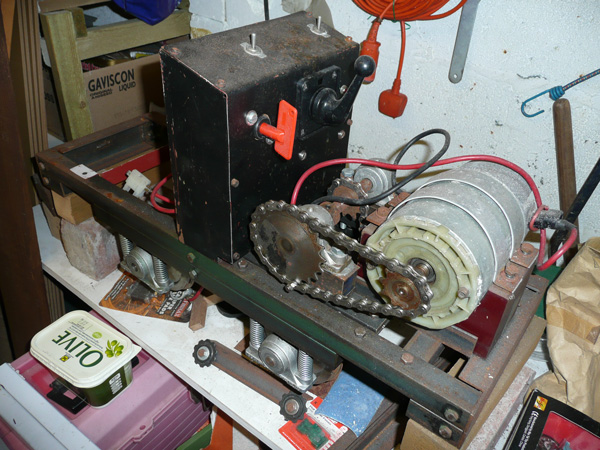
The fabricated black steel box housed the main electrics and switches. The controls (not speed) will be accessed through the door opening, which was only on the right. The C5 motor is mounted on a Tufnel cradle (lovely stuff to machine!). The lay shafts are all mounted on plummer blocks.
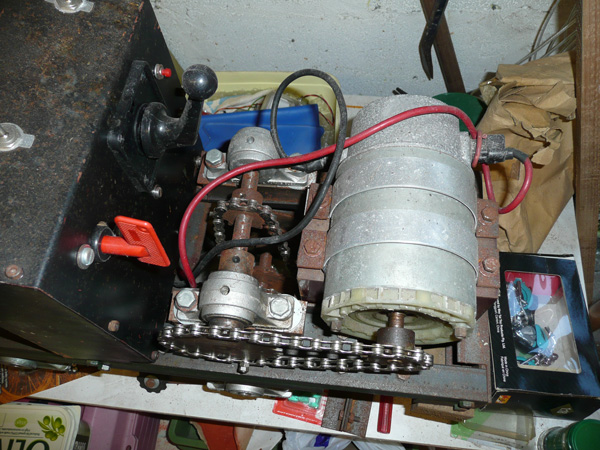
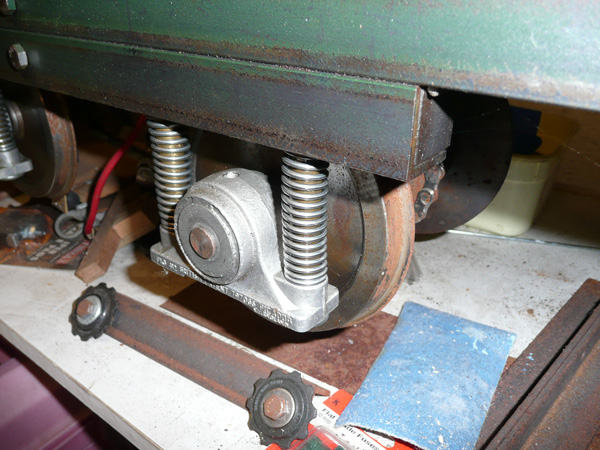
The plummer blocks were originally mounted the other way up, on rubber blocks. However, after its one and only trial run, all four wheels were very rarely in contact with the track at the same time. Friends at the GMES explained that it was usual for the locos to have considerable springing, so that's what happened. Some bracing will probably be required, which was also required on the real thing.
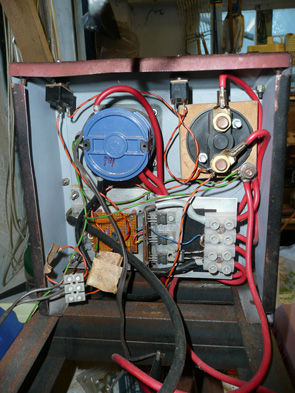
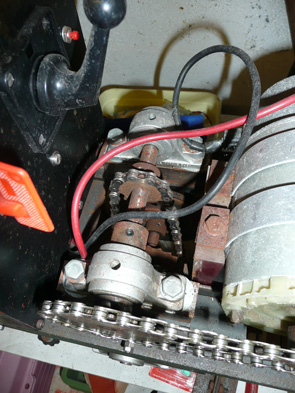
The blue drum with a black handle is the reverser. The orange key as an isolating switch, for safety. The three transistors of the speed controller can just be seen on the mounting plate.
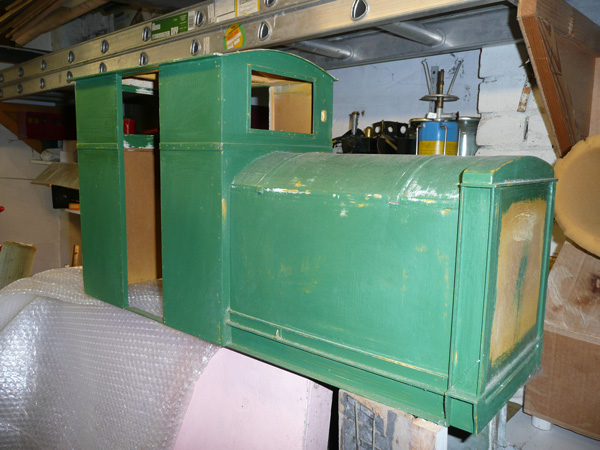
The prototype bodywork shown was constructed from 2mm MDF with aluminium angle stiffeners. It was intended that an aluminium body would be constructed for long term use. However, more and more details were added such as rivets, hinges, exhaust pipe etc.
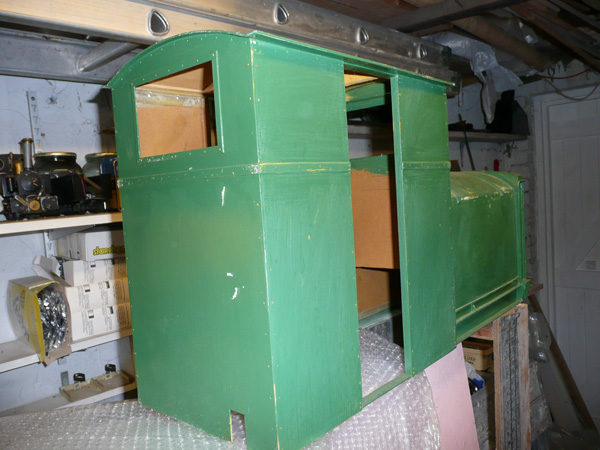
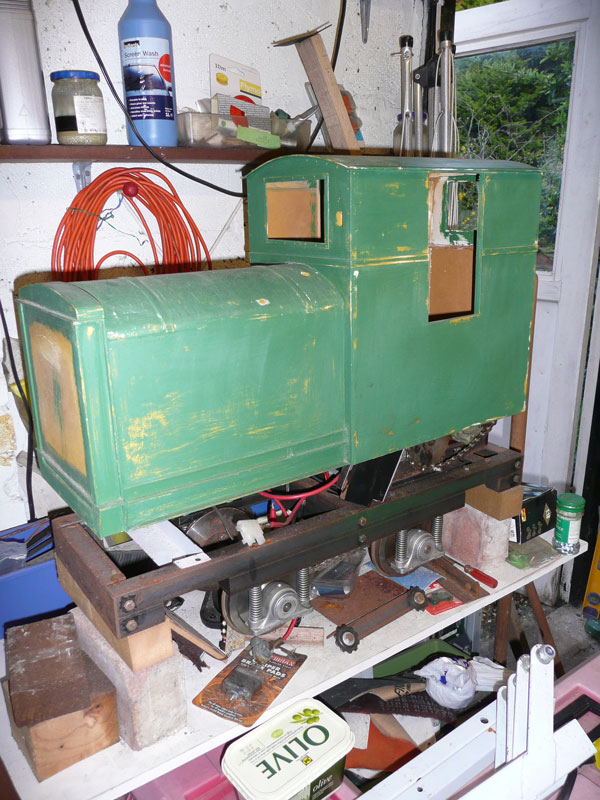
Another issue with the suspension was that the loco needed to be much heavier to keep the springs depressed. On the real loco, castings were bolted on the the chassis and was the method chosen for the model. MDF 'masters' were produced to be sent to a foundry.
Then, for some reason, interest waned and construction stopped. The model has been stored in a damp garage and is not in pristine condition, but it is robust and would be easy to get back into order - one day?
Golden Valley Light Railway visit - March 2008
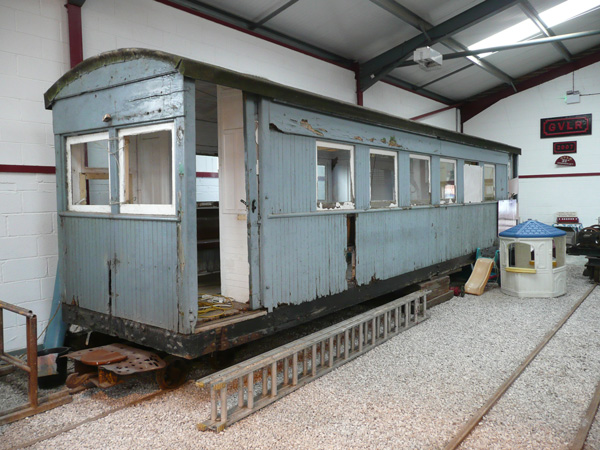
This is ALR coach No. 4 in the shed at the Golden Valley Light Railway at Ripley, Derbyshire. The GVLR is a 2ft gauge railway within the Midland Railway Centre - a preserved standard gauge railway. The coach is about to undergo full restoration and will hopefully run on the GVLR in the future.
The shed was full of steam & IC locos and ex WD (War Department) rolling stock, and the staff / workers / restorers couldn't have been more welcoming.